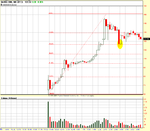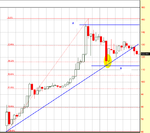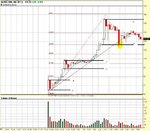timsk
Legendary member
- Messages
- 8,727
- Likes
- 3,424
If you do a search for threads with ‘Setup’ in the title, you’ll find only eight. One of these relates to hardware setups, another five discuss setups in general terms or focus on a particular well known one. The remaining two threads do explore how traders might go about finding, defining and testing prospective setups, but both threads are on a private members forum. It strikes me that it would be in the interests of the wider T2W community to have a thread which attempts to explore this vital topic in some depth.
Anyone who follows the posts of dbphoenix will know that this is a subject about which he has strong views. “Unless one has defined the setup, he cannot have tested the setup. If he has not tested the setup, he has no idea of the probability of its success. With no idea of the probability of success, any trades made off the undefined setup are essentially guesses”. A logical argument, forcefully made. But before you define a setup, you have to find a new one - or choose an existing one, which in itself isn’t always easy.
The purpose of this thread then is to focus on the process of finding, defining and testing a setup. How do you do this? Just as the thread ‘A Trading Plan - You MUST Have One!’ was started with the hope of creating a template; similarly, it is hoped that input from members on this thread may result in a step-by-step guide which any trader can follow to help them complete what is arguably the most complex part of any trading plan.
Tim.
Anyone who follows the posts of dbphoenix will know that this is a subject about which he has strong views. “Unless one has defined the setup, he cannot have tested the setup. If he has not tested the setup, he has no idea of the probability of its success. With no idea of the probability of success, any trades made off the undefined setup are essentially guesses”. A logical argument, forcefully made. But before you define a setup, you have to find a new one - or choose an existing one, which in itself isn’t always easy.
The purpose of this thread then is to focus on the process of finding, defining and testing a setup. How do you do this? Just as the thread ‘A Trading Plan - You MUST Have One!’ was started with the hope of creating a template; similarly, it is hoped that input from members on this thread may result in a step-by-step guide which any trader can follow to help them complete what is arguably the most complex part of any trading plan.
Tim.




